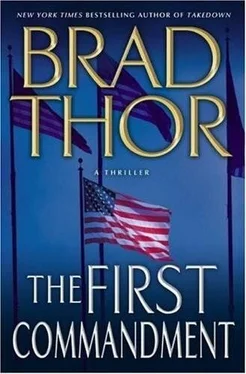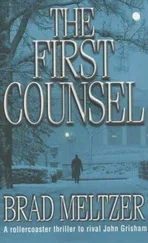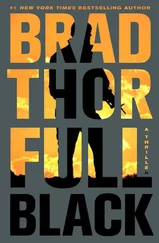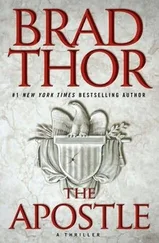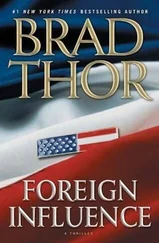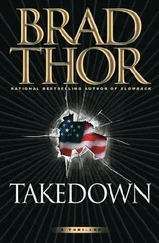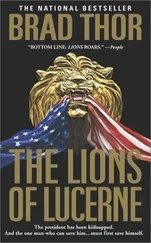Though Mangan had asked that their discussion after the tape recorder was turned off be “off the record,” Sheppard knew there would be no story without it. It had taken him a major chunk of the afternoon, but he had finally gotten the SWAT team leader to agree to be quoted as an anonymous source.
Something was very wrong about that shooting, and Mangan had no desire to increase his complicity in it any further than he already had. The fact that a reporter from the Baltimore Sun had come all the way down to Charleston to talk to him about it told him he needed to start making things right.
Sheppard listened as the SWAT team leader recounted the events surrounding the takedown. It had all supposedly been coordinated via the FBI in D. C. But no one from the FBI’s Columbia, South Carolina, field office had been involved. The two agents who arrived to work with the SWAT team explained that the Columbia office was being purposely shut out. There was a concern that their fugitive had access to a person inside, and pending a full internal investigation, Charleston law enforcement was supposed to remain mum on the Bureau’s involvement in this takedown.
Sheppard had asked Mangan to describe the two FBI agents who had magically shown up from out of town with information leading to the subject’s location. They were the same men whom Tom Gosse had seen take the body from the ME’s office in Baltimore and who had threatened Frank Aposhian. The SWAT leader had described them to a tee, right down to the names they were using-Stan Weston and Joe Maxwell.
The “agents” were very convincing. They were polite, professional, and had all the right credentials. What’s more, they had come to apprehend a criminal who had threatened to kill a bunch of kids and whom the whole state was anxious to see brought to justice.
Mangan and his Charleston County SWAT team were called out, but were relegated to providing cover as Weston and Maxwell took the lead. The pair claimed they wanted to talk to the suspect in hopes of bringing him out alive. Shortly after they entered the house where he was holed up a brief, but fierce gun battle ensued.
Before the smoke had even cleared, Maxwell was at the door letting Mangan and his men know that the suspect had been killed and that they were going to need a meat wagon.
As the lead tactical officer on site, Mangan approached the house to survey the scene for his after-action report. Weston met him at the threshold and bodily blocked his entrance. The agent stated that he and his partner needed to collect evidence and that until they were done, the fewer people trampling the crime scene the better. Mangan didn’t like it. These guys were being a little too overprotective, and he made his feelings known loudly enough that Maxwell came to the door and told Weston to let the SWAT leader inside.
The first thing he wanted to look at was the corpse. It was in a back bedroom, a machine pistol still clasped in his hand and a sawed-off shotgun lying on the floor next to him. As Mangan studied the body, something struck him as funny. In spite of all the bullet wounds the subject had suffered, he wasn’t bleeding very much.
As Mangan bent for a closer look, Agent Weston swooped in and said he needed him to back up so he could get on with his job. Regardless of the voice in the back of his head telling him he had every right to examine the corpse, Mangan did as he was told.
Moments later, Agent Maxwell gently hooked him under the elbow and led him back toward the front of the house. As they walked, Maxwell explained that the FBI had decided to give the Charleston County SWAT team credit for the takedown. This had been a local problem and the citizens of South Carolina would feel much better knowing their own people had put this dirtbag out of commission.
Though it was going to make his guys look good, there was something about all of this that just didn’t sit right with Mangan-especially the body. He’d been around enough stiffs in his time to know that the only kind that didn’t spill blood when shot or stabbed was the kind that was already dead.
There was something else he didn’t feel right about. Maxwell and Weston looked and acted like the real deal, but there was something off about them that Mangan just couldn’t put his finger on.
Leaving the house, Mangan walked quickly back to the SWAT van and climbed inside. Grabbing one of the team’s small, black surveillance cases, he had his men switch radio frequencies and instructed them to keep their eyes on the house. If either of the FBI agents appeared at a window or was preparing to exit via the front or back door, he wanted to know about it. With that, Mangan exited the truck.
Crouching low so he wouldn’t be seen from inside, Mangan slipped around the side of the house, being careful to stay beneath the window line. When he arrived at the back bedroom where the body was, he unpacked a special fiberoptic stethoscope. He would have loved to have had a camera as well, but there was no way he could have drilled through the wall without being detected.
The fiberoptic stethoscope, or FOS for short, was an exceptionally sensitive instrument that enabled tactical teams to listen through doors, windows, and even concrete walls. Mangan powered up the FOS, put on a pair of headphones, and began listening to what was going on inside.
Considering that Maxwell and Weston had shot up a dead body, Mangan wasn’t surprised that they were busily planting evidence. What did surprise him was why they were doing it and on whose orders.
Once the SWAT team leader had finished recounting his tale, Sheppard understood why he had chosen to keep his mouth shut and go along with the charade. Now the ball was in Sheppard’s court, and he needed to plan his next move very carefully. He was about to accuse the president of the United States of several extremely serious crimes all tied together by a disgustingly elaborate cover-up.
AMMAN, JORDAN
The two men sat inside the blue BMW 7 series on a quiet side street near the center of town. Most of the shops were closed for the afternoon prayer. “After this we’re even,” said the man in the driver’s seat as he retrieved a small duffel bag from the backseat and handed it to his passenger.
Harvath unzipped the bag and looked inside. Everything was there. “As soon as I am safely out of your country,” he replied with a smile, “ then we’ll be even.”
Omar Faris, a high-ranking officer of Jordan ’s General Intelligence Department, or GID for short, nodded his heavy, round head. The six-foot-two Jordanian was used to making deals. In the world in which he operated, deals were de rigueur-especially when it came to keeping the swelling tide of Islamic radicalism in check.
What’s more, he had always liked Scot Harvath, even with his unorthodox tactical decisions. No matter how he carried out his operations, Harvath was a man of his word and could be trusted.
The two had been paired together in Harvath’s early days with the Apex Project. A cell of Jordanians had killed two American diplomats and was plotting to overthrow King Abdullah II. Though officially the GID had no idea that Harvath was operating inside their country, Faris had served as his partner and a direct conduit to the king.
Abdullah had asked only one thing of Harvath-that he do his utmost to bring the cell members in alive. It was an incredibly complicated and dangerous assignment. It would have been much easier to kill the terrorists and be done with the entire operation. Nevertheless, at great risk to himself, Harvath honored the king’s request.
In doing so, Harvath not only earned the sovereign’s respect but also earned a couple of points with Faris, who was promoted as a result of the mission’s success.
Читать дальше
